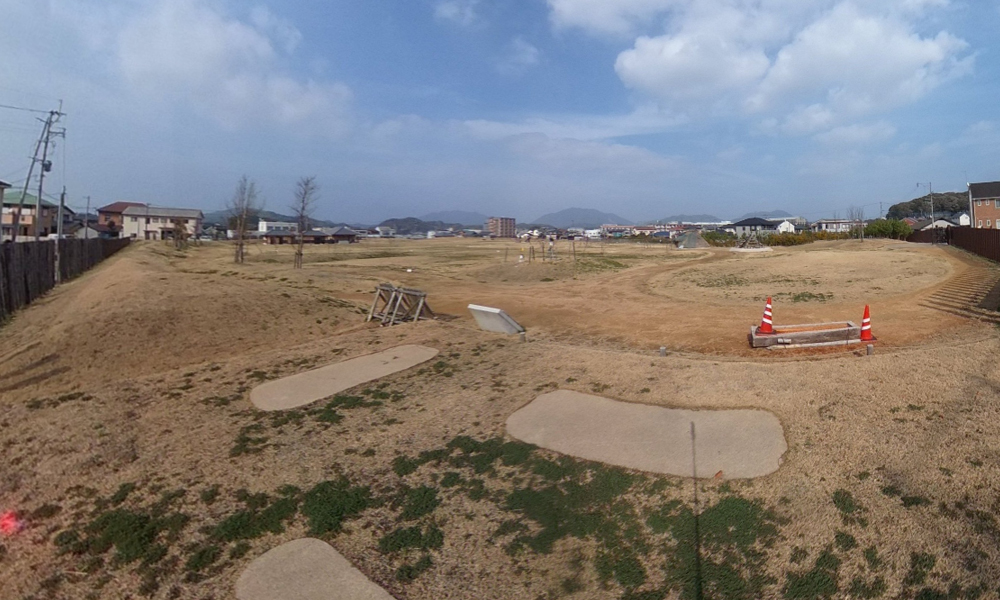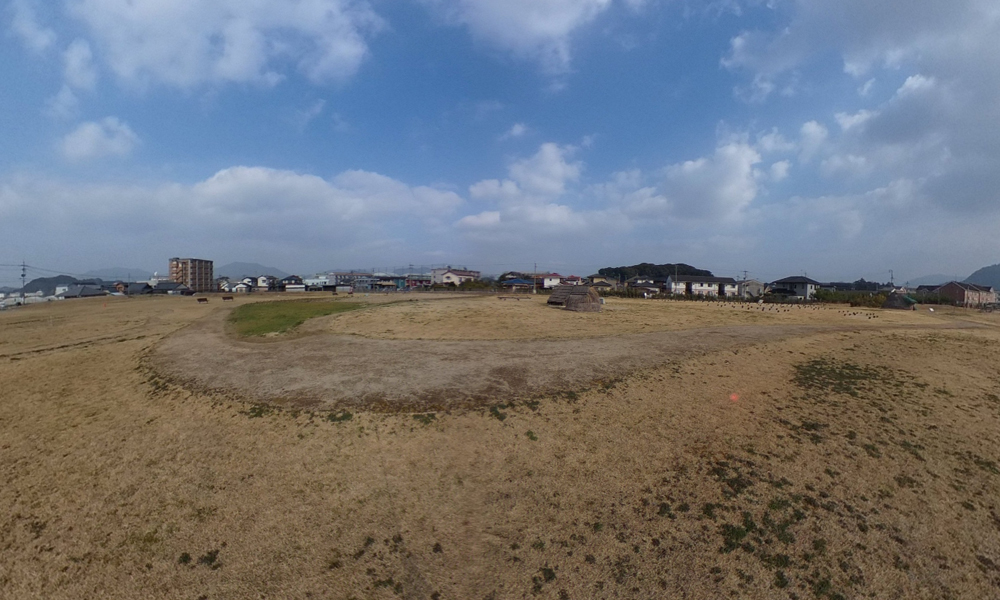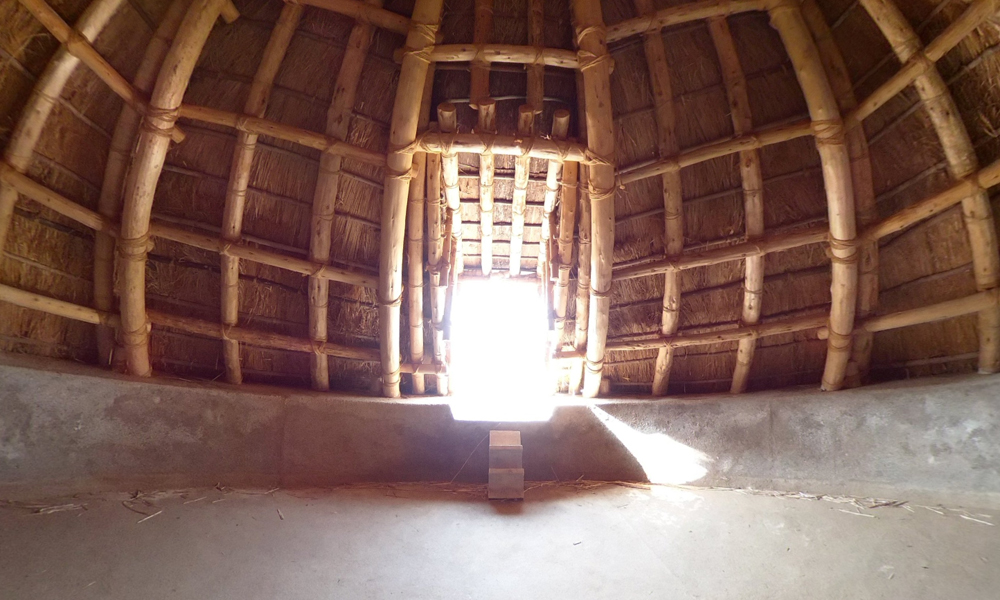- 特徴
- 所在地:福岡県宗像市田熊二丁目9番37外
- 指定年月日:平成22年2月22日
- 主な時代:弥生時代~古墳時代(紀元前3世紀から紀元6世紀頃)
田熊石畑遺跡は市の中央西部、市内を流れる釣川中流の標高12m前後の台地上に位置する弥生時代から古墳時代にかけての集落遺跡です。 なかでも弥生時代中期前半の有力者集団の墓域はわが国の弥生文化を考える上で大変重要なものです。遺跡は過去に宗像高等女学校(宗像高校の前身)、 旧中央中学校などの学校用地として利用され、学校移転後ながらく、市街地の中に残された空き地となっていました。 平成20年(2008)になり開発に伴って発掘調査が開始されましたが、弥生時代の墓域の発見により保存されることになりました。 現在は、田熊石畑遺跡歴史公園(愛称:いせきんぐ宗像)として活用され、市民の憩いの場となっています。
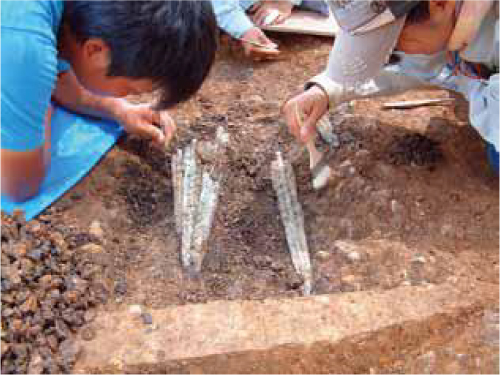
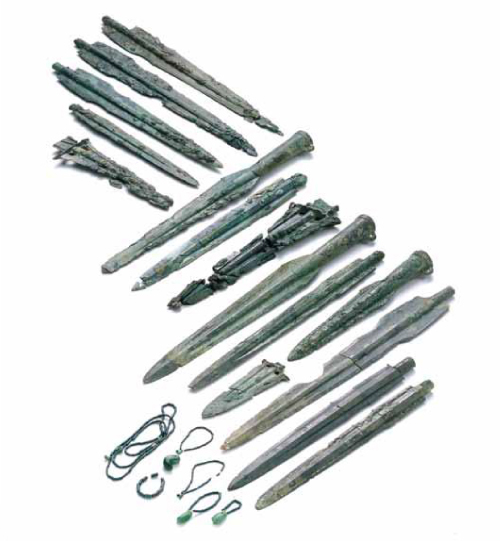
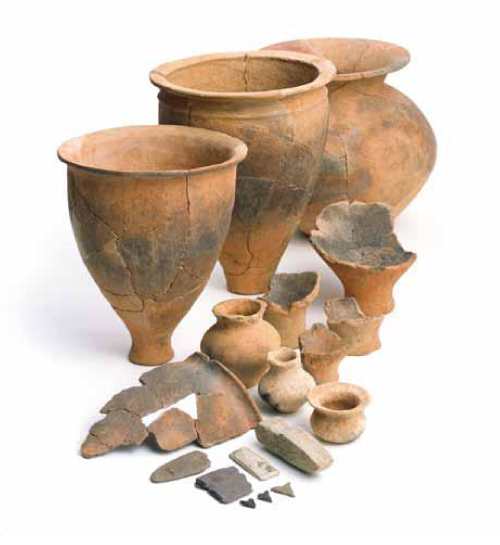
田熊石畑遺跡の様子を実際に動かしながらご覧いただけます。パソコンの方はマウスで図を上下左右にドラッグしてみてください。 スマートフォンの方は図を指で見たい方向にフリックしてみてください。
-
Post from RICOH THETA. - Spherical Image - RICOH THETA
-
Post from RICOH THETA. - Spherical Image - RICOH THETA
-
Post from RICOH THETA. - Spherical Image - RICOH THETA
遺跡は、昭和8年(1933)に宗像高等女学校に赴任していた田中幸夫教諭によって運動場の拡張工事の際に発見され、 学生らの参加によって調査が行われました。これが宗像地域で最初の考古学的な発掘調査です。
調査開始からほどなくして、鮮やかな緑青におおわれた銅戈が見つかりました。詳細な調査を行うと銅戈が見つかった場所は弥生時代の有力者の墓域で、 弥生時代中期前半(紀元前2世紀頃)の刳抜式木棺墓であることが分かりました。その後も周辺の調査が進むにつれ、発見は続き、最終的に9基の墳墓を確認しました。 調査では6基の墳墓を調査しましたが、調査したすべての墓から銅矛・銅剣・銅戈の武器形青銅器が出土し、 最終的に15点が見つかりました。一つの墓域(区画墓)からの出土としては日本最多級です。
武器形青銅器とは、弥生時代前期末頃に朝鮮半島から伝わった青銅製の武器で、銅剣・銅矛・銅戈の3種があります。 有力者の所有物とされ、墳墓から大量に出土することはまれです。
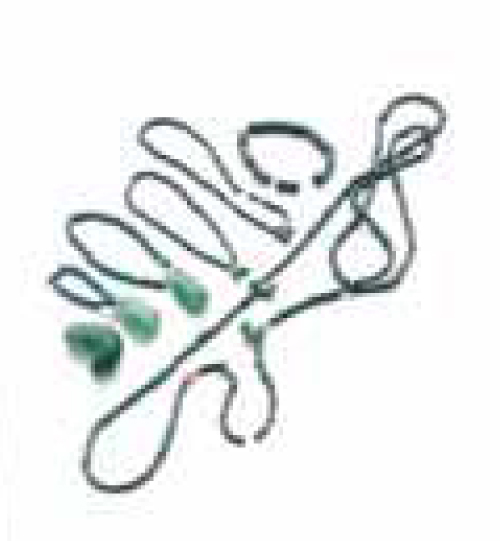

この遺跡の発見によって糸島平野の伊都国や福岡平野の奴国、松浦地域の末羅国など『魏志倭人伝』にみえる弥生文化先進地の東辺とみられていた宗像地域に、 弥生時代中期前半の段階で吉武高木遺跡(福岡市)や宇木汲田遺跡(唐津市)などとほぼ同格の有力者集団が存在していたことがわかりました。 中国の歴史書『漢書』地理志にみえる弥生時代中期頃の倭(日本)にあったとされる百余りの国々「百余国」のひとつに考えることも可能です。
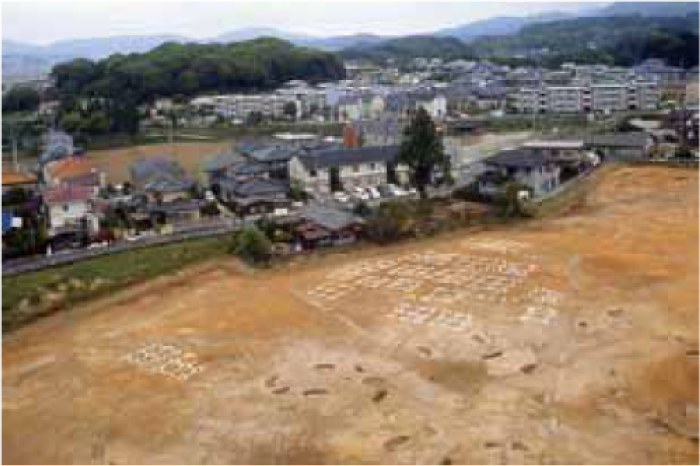
また、調査では整然と建ち並ぶ古墳時代(6世紀頃)の倉庫群も見つかっており、その規模から在地豪族とのかかわりをうかがうことができます。 近隣には東郷高塚古墳(4世紀後半)やスベットウ古墳(6世紀中頃)といった前方後円墳がつくられていることから、 田熊・東郷地域は古墳時代になっても重要なエリアであったといえます。田熊石畑遺跡は、このような有力集団を育てるゆりかごであり、 古墳時代にはヤマト王権と手を結び、大海原を舞台に活躍したムナカタ族たちの出発点となったのではないでしょうか。
もとは弥生時代前期末頃に朝鮮半島から伝わった青銅製の武器で、銅剣・銅矛・銅戈の3種があります。
有力者の所有物とされ、墳墓から大量に出土することはまれです。 はじめに
はじめに お問い合わせ
お問い合わせ